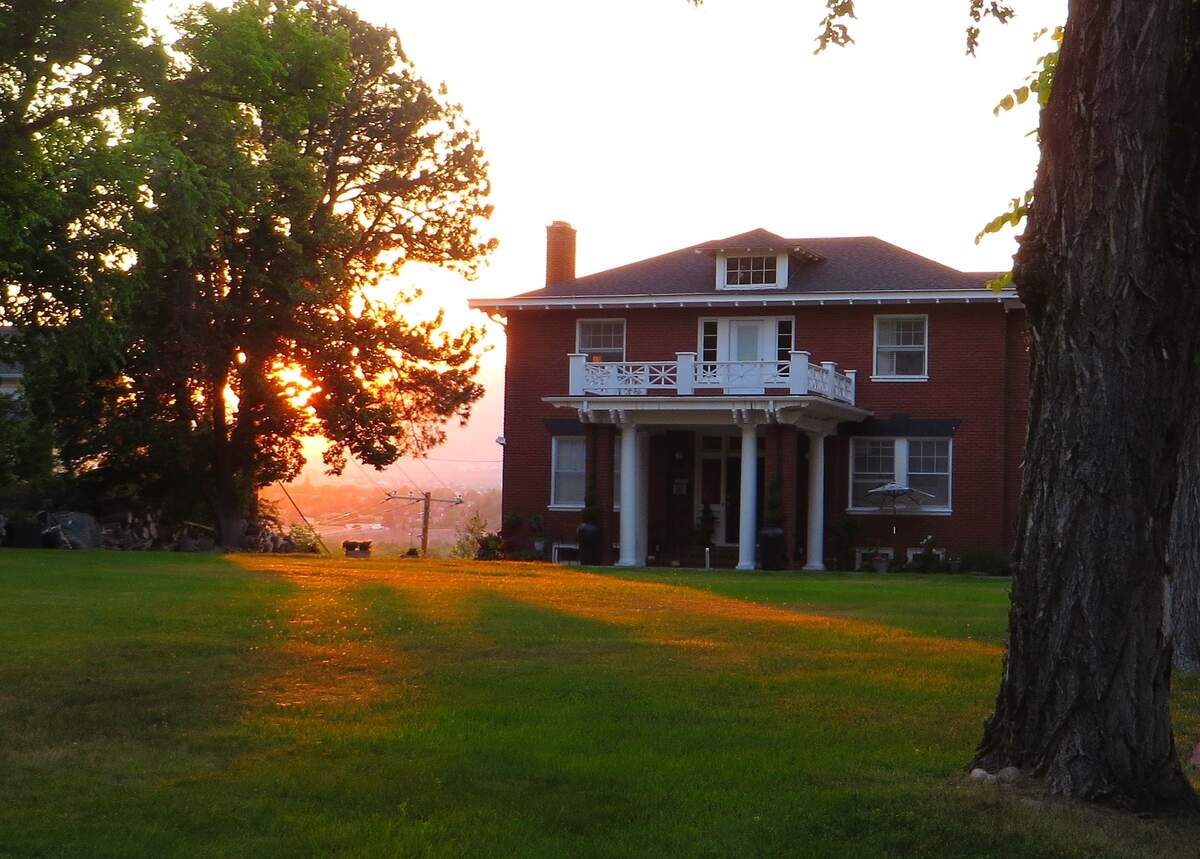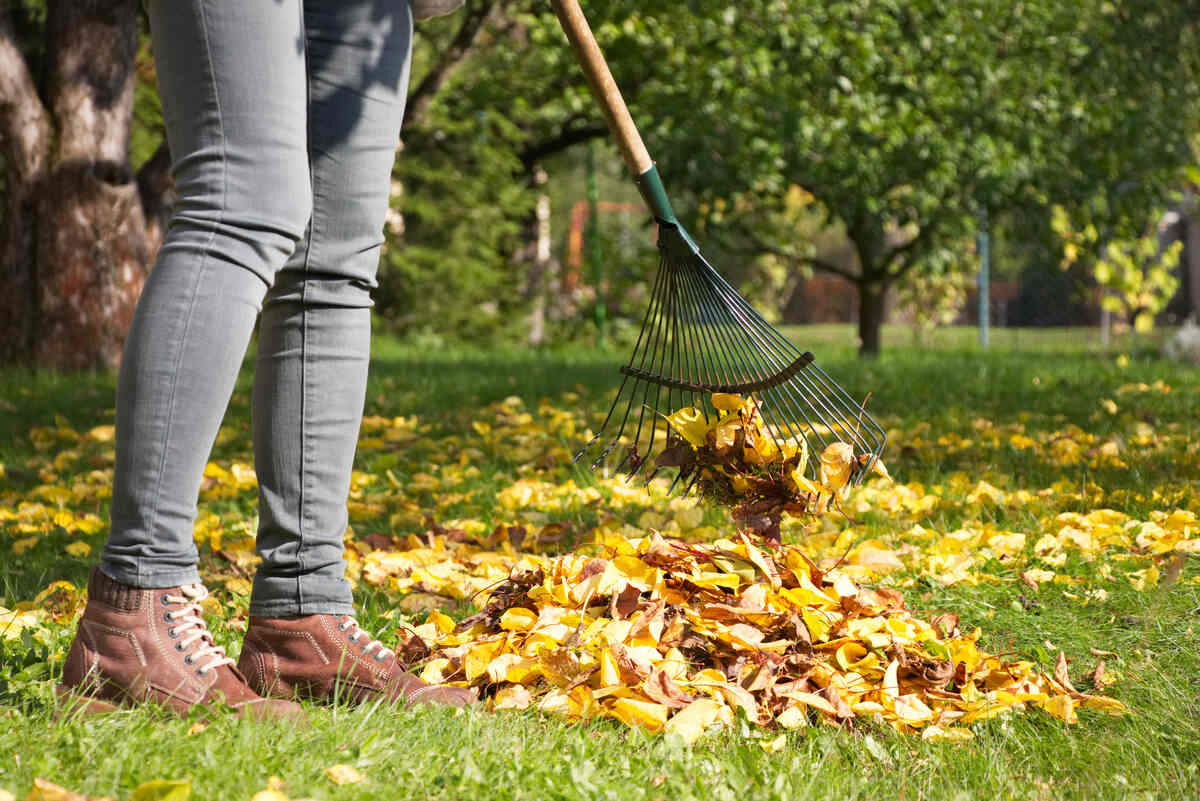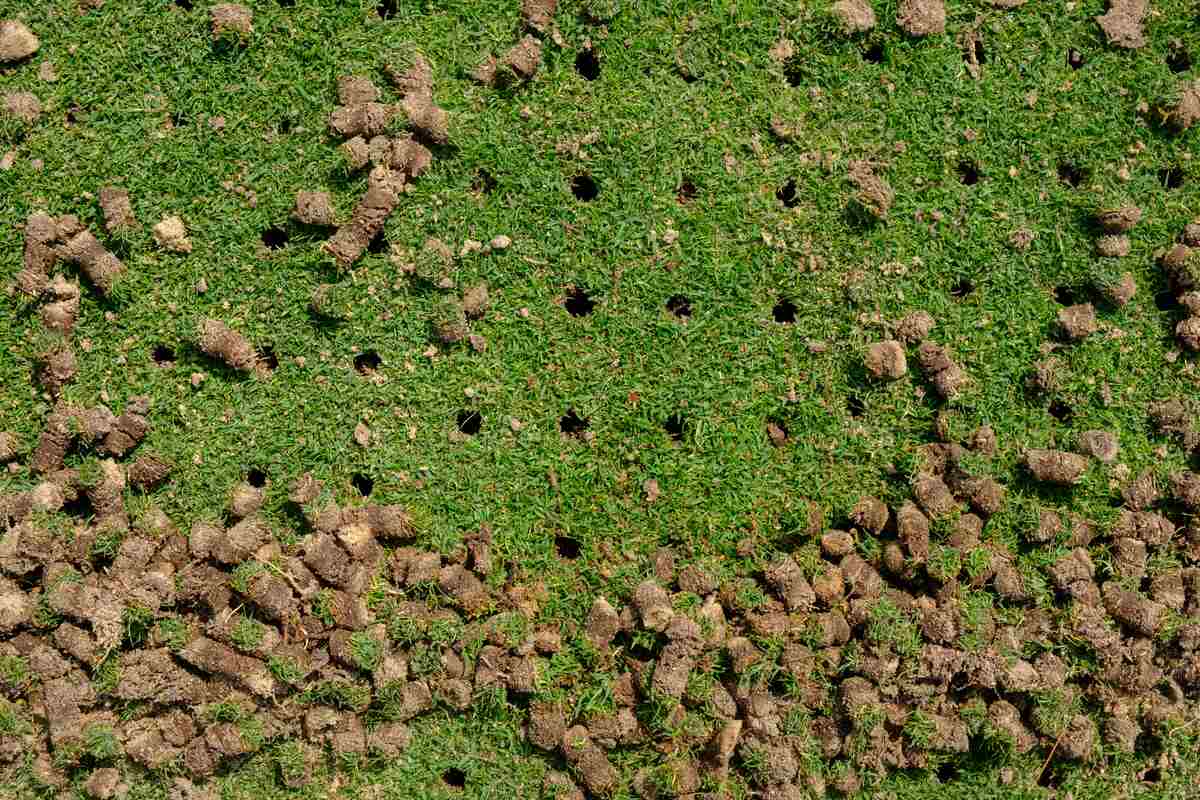
Homeowners experiencing compacted soil can look to this lawn aeration guide for Reno, Nevada, to explain what lawn aeration is and the best practices when aerating, like not disturbing the plugs after aeration.
What is Aeration?
To aerate a lawn is to puncture the ground and pull out plugs of dirt to allow air and water to penetrate the soil and better access the roots of your lawn. For Reno, you are most often going to have cool-season grass, which is best to aerate in the fall. Aerating in the fall helps the roots of your grass to grow in preparation for the upcoming winter season.
Types of aerators:
- Solid tine aerator: This tool only punctures the soil. It does not remove any dirt.
- Hollow tine aerator: This is a tool made with hollow tubes that creates holes by removing dirt. These come as manual tools and gas-powered machines.
When to Aerate Your Reno Lawn
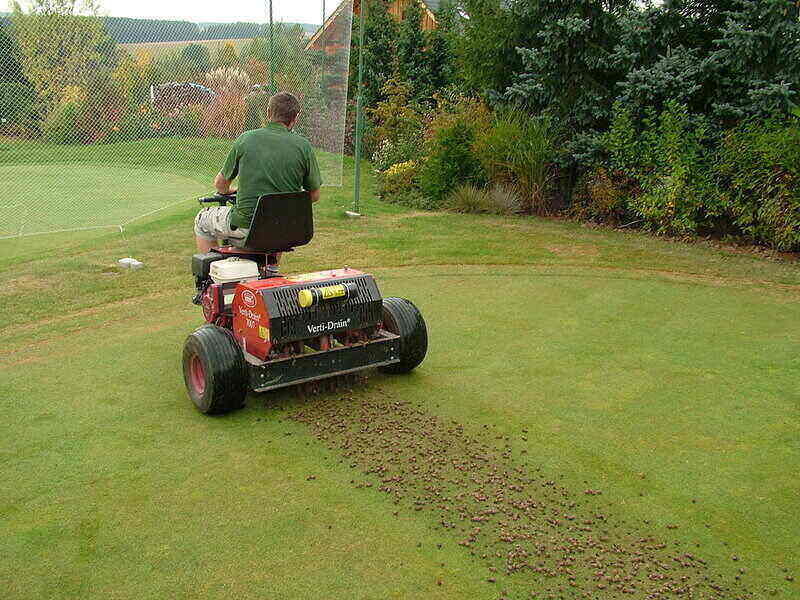
For most cool-season grasses, the best time to aerate your lawn is in the fall. However, if you don’t do it in the fall and find your lawn needs aeration in the spring, it can also be done at that time.
Aeration is needed when you have either a thatch problem or soil compaction. Thatch becomes a problem when there is a thick layer (more than 1 inch) of plant matter that settles between the grass and the soil. Soil compaction is when your soil is pressed tightly together, reducing the space between soil particles.
In Reno, many residents deal with soil that has a high clay content, which is prone to soil compaction. However, it is important to note that not all lawns will need aeration. Reno does have some areas with sandy soil, which does not compact nearly as easily as clay soil. But you will still need to keep an eye on your lawn as compaction can happen to dirt of any kind.
When is aeration needed?
- Soil is compacted
- Thatch is more than 1 inch
- Before overseeding (provides better seed-to-soil contact)
Benefits of aeration:
- Reduces water runoff
- Increases effectiveness of fertilizer
- Improves penetration of water
- Relieves compaction
- Lessens thatch accumulation
- Helps the growth of your lawn’s roots
How to Aerate Your Reno Lawn
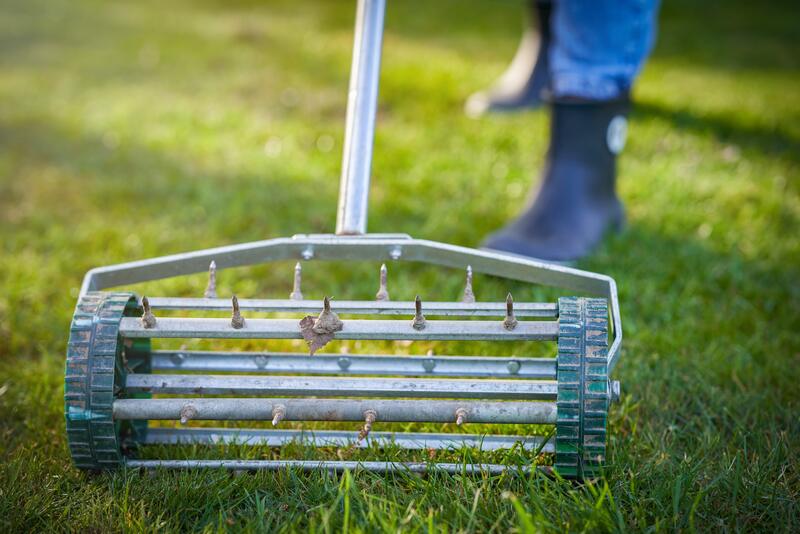
Before you can aerate your lawn, there are a few things you need to do to prepare your yard for aeration:
1. Clean Up
Begin by cleaning up your yard. Remove all debris or anything that is on the grass, including potted plants, lawn decor, or any furniture. If you have a yard in need of a serious cleaning, check out our Yard Clean-Up Guide for Reno.
2. Mow
Next, mow your lawn to a shorter height a few days before you plan to aerate your yard. This will help to be able to aerate deeper into the ground to break up the compacted dirt to encourage the flow of water, air, and nutrients to the roots.
When mowing, as always, be sure the grass is dry to avoid uneven cuts and clumping. Also, use sharp mower blades to avoid tearing the grass, which can damage your lawn.
3. Water
Thoroughly water your lawn the night before to allow the soil to soften. Just like with “Goldilocks and the Three Bears,” you need just the right amount of moisture in your soil. One of the keys to aerating your yard is to be sure the soil is moist, not wet, but not dry either.
If your soil is too wet, it will create a muddy mess that can ultimately hinder your efforts. But you also don’t want your soil to be too dry as that will make it much more difficult to aerate.
4. Flag Sprinkler Heads
If you have a sprinkler system installed in your yard, walk your lawn and find all the sprinkler heads and flag them. This will help you to avoid accidentally damaging them with your aeration equipment.
5. Aerate
Finally, it’s time to aerate your lawn. Be sure to aerate your whole lawn, not just specific areas. Avoid missing any areas by aerating in a criss-cross pattern across your lawn. Immediately following aeration, stay off the grass for the first few days to give the soil time to settle and minimize compaction.
What to Do After Lawn Aeration
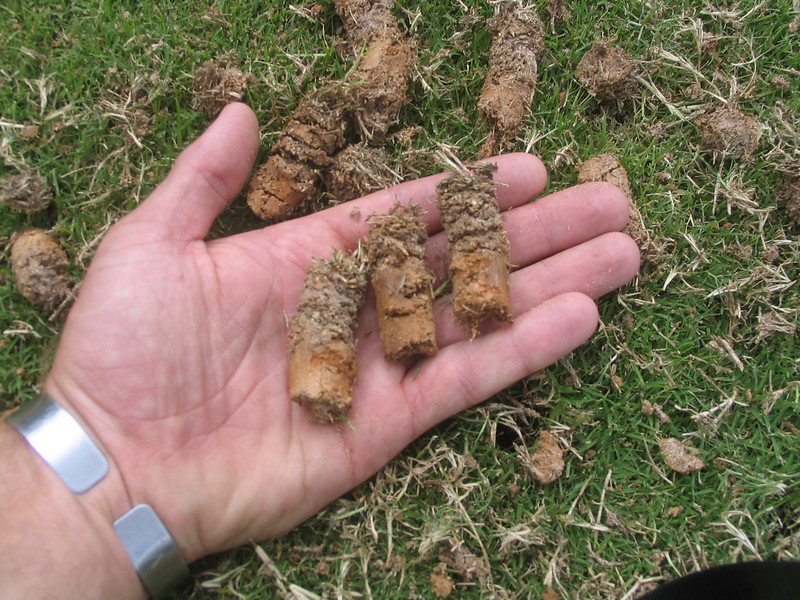
What you do after aeration is just as important as aerating your lawn. Not taking the time to properly care for your lawn post-aeration could thwart your efforts. Watering, overseeding, and limiting foot traffic are just a few of the important things to do in the days after aerating your lawn.
- Don’t disturb the soil plugs: The plugs will naturally break down over time, releasing beneficial nutrients.
- Overseed: Now that your lawn is primed for growth, overseeding will help thicken up your lawn and fill bare areas. For seed suggestions, check out our story on the Best Grass Seed for Nevada.
- Topdress your lawn: This adds a thin layer of topsoil or compost over your lawn. Topdressing can improve soil structure, reduce the need for fertilizer, and protect the new grass seed.
- Apply fertilizer: Now is the optimal time to fertilize. The aeration holes allow more nutrients to reach the roots faster.
- Water: Time to water. But be sure to follow the water and wait rule. The water and wait rule is when you water your yard until it begins to puddle. Then stop and wait for it to soak in (1-2 hours). Then repeat until water penetrates the soil 6-8 inches.
Water every day for the first three weeks. Once you start to see grass above the soil, return to your normal watering schedule. Note: Be sure to obtain a 6-week watering variance from the Truckee Meadows Water Authority.
- Limit foot traffic: While your grass is still recovering and growing, you should avoid walking on the lawn as much as possible as it is still very vulnerable.
- Remove weeds: Sometimes weeds will take advantage of the vulnerable state of your lawn and pop up. But don’t use herbicides; they could end up killing your germinating grass seed. Instead, you will need to pull weeds by hand.
- Wait to mow: Once all is said and done, don’t be too fast to pull out the lawn mower. Wait until the grass grows to the same height as your established grass. For proper mowing heights, check out our cool-season grass growing guide.
For more lawn care pointers, check out our Pro Lawn Care Tips for Reno.
How Much Does Lawn Aeration Cost in Reno?
As with all lawn care and maintenance services, prices will vary depending on a number of factors. The three biggest factors that drive the cost to aerate your lawn are your yard size, aeration type, and geographic location.
The average-sized American lawn will cost between $78 and $238 to aerate or about $144 on average. Homeowners with a large yard can expect to pay up to $636 while those with an exceptionally small lawn may pay as little as $42 for aeration.
FAQ About Lawn Aeration in Reno
How Do I Know When I Should Aerate My Grass?
There are a few things to look out for that signal you need to aerate.
- Thinning grass
- Slow growth
- Thick, spongy layer of thatch
- Difficult to penetrate the soil with a screwdriver
- Uneven yard
- Puddles form in low areas
- Frequent issues with pests and diseases
- Patches of bare soil
How Deep Should You Aerate Your Lawn?
The recommended depth to aerate is 2-3 inches with holes spaced 3 inches apart to promote healthy roots and alleviate compaction.
Does the “Grass Ban” Impact Reno?
No. Only southern Nevada residents are impacted by the non-functional grass ban. Check out our story about What Does Nevada’s “Grass Ban” Mean for Homeowners?
Contact a Lawn Care Professional
Does lawn aeration sound like a daunting task for you, or do you not have the time or patience for such a task? Contact a local lawn care professional to complete these yard care tasks for you and get your lawn in tip-top shape.
Main Image Credit: Shutterstock
